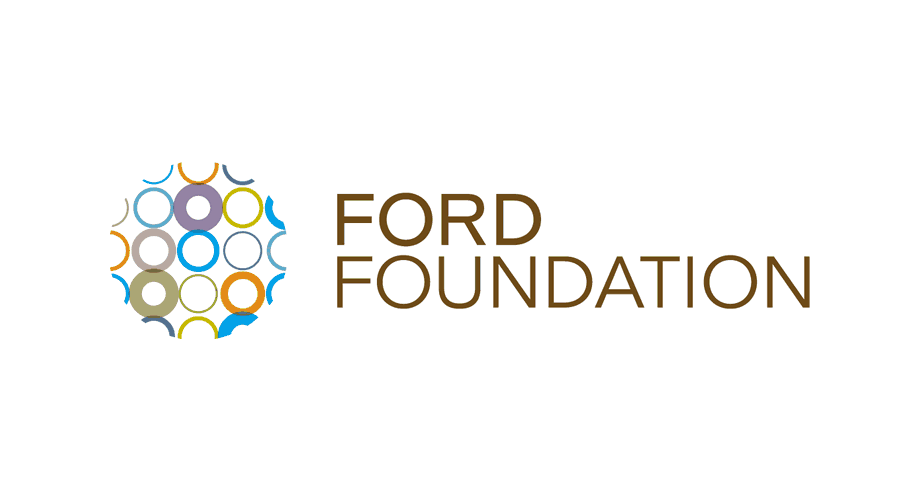Case Studies Library
Our case study library features over 35 cases of philanthropic best practices modeled by leading philanthropic institutions to serve as a tool for learning and advancing the field of strategic philanthropy. Each was authored or co-authored by Laura Arrillaga-Andreessen and published through the Stanford University Graduate School of Business (GSB).
Case studies are educational tools for academics and students who want to deepen their understanding of the field of strategic philanthropy and can be employed in the classroom for scenario-based learning.
ORGANIZATIONAL CASE STUDIES
The Altman Foundation case highlights the evolution of foundation strategy: governance practices, management and staffing, investment approach, overall grantmaking strategy and grantee selection and management.
The Annie E. Casey Foundation case builds understanding of social investing and introduces two investment tools: program related investments and mission-related deposits.
The Breakthrough Initiatives case study explores philanthropy in the fundamental sciences, including prize-based philanthropy, public involvement, publicization of initiatives, and long-term multidisciplinary programs of research and development.
The Brett Family Foundation case covers critical philanthropic strategies to effectively change public policy, in particular collaborating with diverse partners, empowering key talent and harnessing the media’s power.
The Broad Education Foundation case illustrates how foundations innovate to create systems change and raises questions about how to evolve the foundation’s approach to grantmaking and governance.
The Case Foundation case explores people, technology and ideas that disrupted donor engagement, transparency and the grantmaking process, and highlights collaboration within and between sectors.
The Cisco Corporate Philanthropy case explores aspects of corporate philanthropy including motivation, strategy, the impact of corporate culture and evaluating effectiveness in meeting business and philanthropic objectives.
The Community Foundation Silicon Valley case explores the foundation’s donor-centric strategy and how it led to growth through donor-advised funds, and considers strategic tradeoffs unique to community foundations
The Donorschoose.org case explores how technology facilitated a new funding model, and highlights changing donor-beneficiary relationships, transparency, approaches to using data and the democratization of philanthropy.
The Ford Foundation case illustrates how a foundation restructuring can effectively achieve one unified goal and strategy, and explores the importance of creative expression, arts and culture in the fight against systemic inequality.
The Gap Inc. case explores Gap Inc.'s unique approach to corporate philanthropy strategy through the creation of a program to empower their female garment workers’ lives.
The Global Fund for Women case highlights how leadership change at an international grantmaking organization impacted growth, accountability and performance measurement and influence on public policy.
The Good Ventures case explores philanthropic strategy, continuous learning, knowledge sharing, evaluation and collaborative grantmaking, and highlights the power of informed decisions.
The GuideStar case explores data as a tool for nonprofit transformation through accountability and communication with donors, and includes a sample nonprofit assessment.
The (previously named) Interplast case covers international giving and illustrates how an organization evolved in order to adapt to changes in competition and the external fundraising landscape.
The John & Marcia Goldman Foundation case highlights the importance of teaching inter-generational giving values and covers different types of individual giving vehicles and the value of objective evaluation.
The (previously named) Laura and John Arnold Foundation case highlights how a foundation developed new strategies and innovative tools to push for policy change and explores evaluation of policy initiatives.
The McKay Family Foundation case highlights the social justice philanthropy strategy of helping to pass legislation by convening and funding an organization involved in the political process.
The Michael and Susan Dell Foundation case illustrates the different ways technology can increase efficiency and effectiveness in both a foundation’s programmatic interventions and internal processes.
The Palantir Philanthropy Engineering case highlights a new model of corporate philanthropy based on in-kind giving, and explores the use of data and software to improve lives.
The Robert Wood Johnson Foundation case highlights the assessment of how effective research and evaluation components are in achieving objectives and measuring impact on policy-level outcomes.
The Robin Hood case introduces a venture philanthropy model and highlights the pioneering efforts to apply due diligence and outcomes measurement to grantees.
The Rockefeller Foundation case illustrates collaboration within and between public and private sectors and highlights innovations in social finance, focusing on the development of social impact bonds.
The Sand Hill Foundation case explores how to manage donor-donee relationships, especially during evaluations, and how to develop effective program measurement strategies, processes and implementation plans.
The September 11th Fund case exposes readers to the various challenges and opportunities faced by a new foundation responding to a crisis situation and managing public perceptions.
The Siegel Family Endowment case explores how a family foundation developed a grantmaking strategy and an approach to achieve systems-level impact.
The Skoll Foundation case illustrates how an innovative organization and strategy emerged within the philanthropic field to respond to social entrepreneur needs.
The Southern Partners Fund case explores the unique values and practices of a grassroots philanthropic organization, including the creation and transfer of philanthropic resources to a community fund.
The SV2: Silicon Valley Social Venture Fund case exposes students to venture philanthropy, and its unique high- engagement, infrastructure building investment approach.
The William and Flora Hewlett Foundation case introduces the theory of change model and highlights how an organization can use this model to structure its strategic planning and evaluation efforts.
The Thiel Foundation case highlights new models for philanthropic funding of innovation and explores the foundation’s ‘contrarian philanthropy’ strategy across its seemingly disparate program areas.
The Thomas and Stacey Siebel Foundation and Meth Project case highlights the development of a nationally scalable solution through a proven pilot program’s replication and the use of public policy efforts to raise government support and public engagement.
The Transatlantic Community Foundation Network case educates readers about community foundations at the international level, and highlights how the network shared best practices, promoted international collaboration and built awareness.
OVERVIEWS OF NEW MODELS IN
STRATEGIC PHILANTHROPY
The Blended Value overview introduces the blended value approach to foundations’ financial management—actively aligning financial and social investments— and considers the trade-offs of various strategies.
The Corporate Philanthropy short introduction covers various motivational models for corporate philanthropy, forms it can take and the debate over both its appropriateness and its effectiveness.
The Philanthropy in America historical and strategic overview discusses themes and key figures in American philanthropy, from early colonial days to the creation of the modern philanthropic movement.
This Program-Related Investments overview illustrates through seven case studies issues like the rationale for making PRIs, barriers to adoption, opportunities, and innovations.
This short introduction illustrates the Social Return on Investment method of evaluating nonprofit investments, with the Roberts Enterprise Development Fund’s procedure as an example.
The Venture Philanthropy overview introduces the model of venture philanthropy and reviews key practices that are common to venture philanthropists.

































